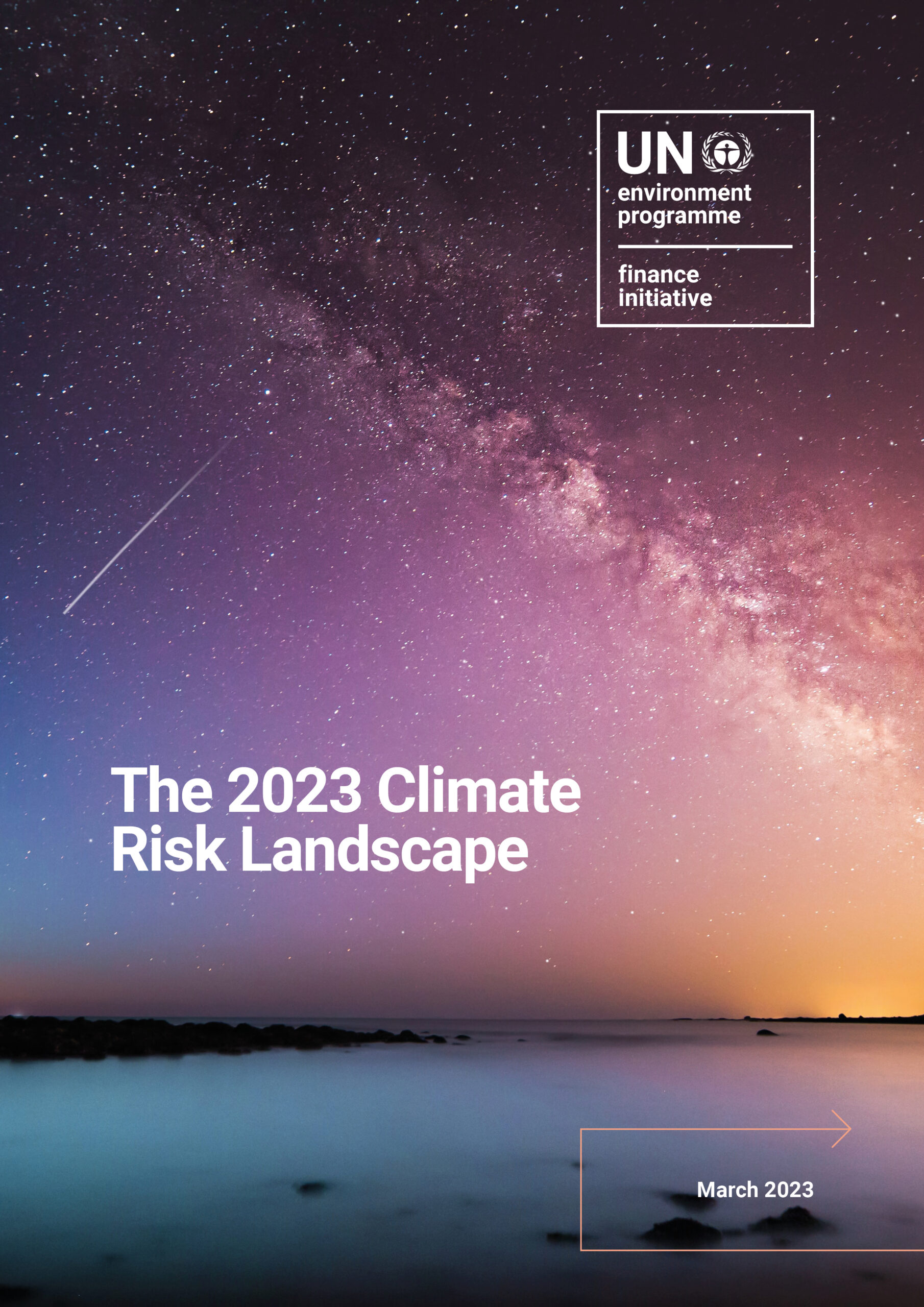
07 March 2023Climate Change, Publications, Risk, TCFD
POPULAR CONTENT

07 March 2023Climate Change, Publications, Risk, TCFD

17 May 2022Events, Roundtables

19 December 2023Banking, Climate Change, Insurance, Investment, Nature, News, Policy, Pollution & Circular Economy, SDGs and Impact, Social
Nature, Publications | 02 July 2021
The Financial Sector Guide for the Convention on Biological Diversity (CBD), which is geared towards all financial institutions, stakeholders and partners, aims to mobilise financial institutions to ensure a nature positive world, by fostering better understanding of nature’s importance for the financial sector, providing insight on the CBD process. The guide is the first of its kind between the CBD and partner organizations, and the financial sector.
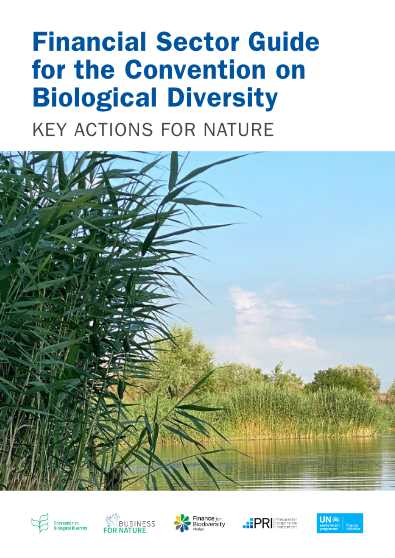
News, SDGs and Impact | 30 June 2021
Geneva, 30 June 2021 – UNEP FI has launched two new tools for impact analysis; the Real Estate Impact Analysis…

Banking, Nature, Publications, Target Setting | 24 June 2021
The Guidance on Biodiversity Target Setting is designed for PRB signatories, allowing banks to take a systematic approach to setting and achieving biodiversity targets. The guidance presents three real-life case studies, and includes a detailed how-to guide and has been developed by 30 PRB signatories, UNEP FI, UNEP-WCMC and the Science-based Targets Network (SBTN).

Blue Finance, Nature, News | 24 June 2021
You have signed the UNEP FI Sustainable Blue Economy Finance Principles. Why did American Hellenic Hull Insurance Company take this…

Blue Finance, Nature, News | 18 June 2021
Investment in blue economy is vital for planet’s future, but the breadth of risks to ocean health pose challenges to asset owners. The ocean economy is estimated to be worth US$2.5 trillion annually, but just US$13 billion has been invested during the past ten years to support sustainability, according to an international joint academic and public institution report. If further action is not taken to tackle the effects of unsustainable use of oceans and their resources, a total of between US$200 billion-US$1 trillion will be required annually by 2100 to pay for coastal protection, relocation of people and loss of land to sea level rise.
Publications, SDGs and Impact | 17 June 2021
The Real Estate Impact Analysis Tool was developed to enable financial institutions to holistically identify and assess the impacts associated with real estate investments and portfolios. There are multiple use cases for this kind of analysis, including: decision-making and due diligence in the context of asset acquisition; fund/portfolio review and management; impact target-setting as well as impact & SDG reporting.
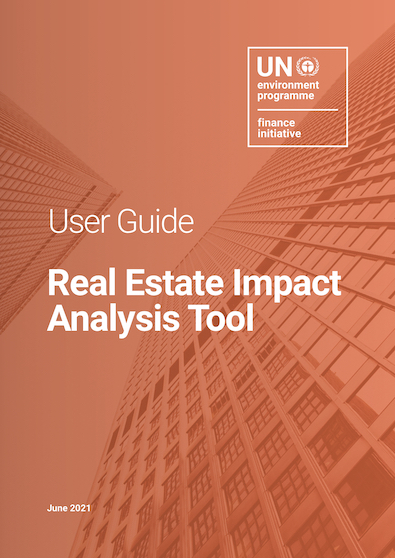
Blue Finance, Nature, News | 17 June 2021
Based on the market-first practical guidance for financial institutions, Turning the Tide, UNEP FI’s recommended exclusions list for a sustainable blue economy provides financial institutions with an overview of activities to exclude from financing due to their damaging impact on the ocean and high risk.

Blue Finance, Nature, Publications | 17 June 2021
Based on the market-first practical guidance for financial institutions, Turning the Tide, UNEP FI’s recommended exclusions list for a sustainable blue economy provides financial institutions with an overview of activities to exclude from financing due to their damaging impact on the ocean and high risk.
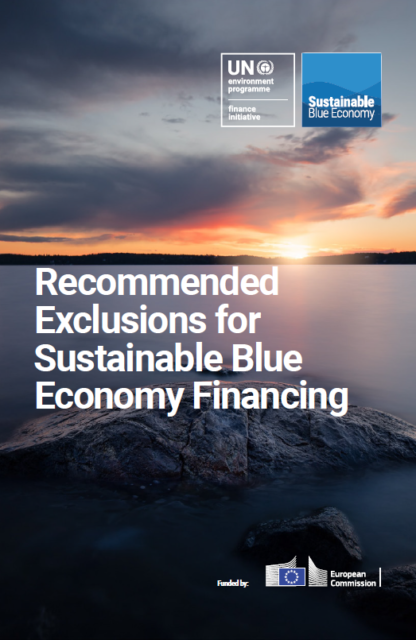
Publications, SDGs and Impact | 14 June 2021
The Investment Portfolio Impact Analysis Tool was developed to enable financial institutions to holistically identify and assess the impacts associated with their…
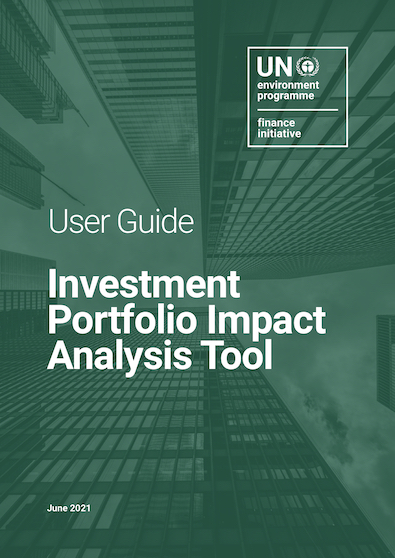
The market-led and UN-supported Taskforce on Nature-related Financial Disclosures (TNFD) was launched on 4 June 2021. It is designed to…
